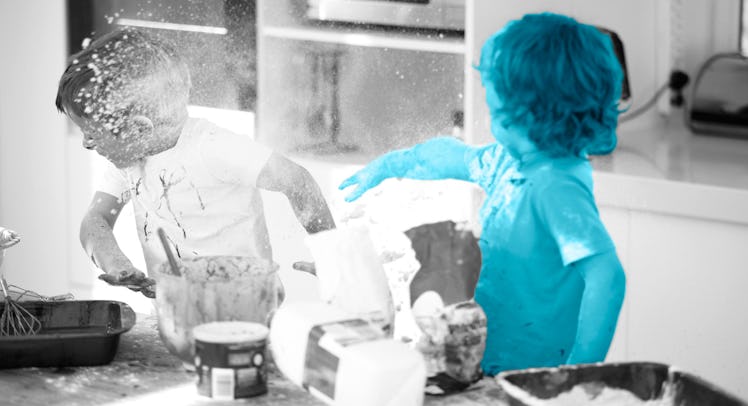How to Fight the Bad Influence of Your Kid’s Bully Friend
When a child's bad behavior is the result of a friend who's a bad influence, parents need to double down on the empathy.

Sometimes it’s possible to hate a kid before you even meet the kid. Particularly when that kid is like a Typhoid Mary of bad-habits — incubating loud burps, swear words, shoving — infecting your kids with all the behaviors you worked assiduously to avoid. For parents of school-aged children, that kid is the archnemesis. Fortunately, he or she can be defeated because they have a weakness: Kids are easy to fool.
Parenting Coach Joani Geltman says kids in the preschool and kindergarten age range are really just trying to figure out how to get what they want. The problem is that the bad influence child is good at getting results. So the previously non-annoying child will repeat what they’ve seen succeed. “They don’t have the brain power or life experience to say this is bad and we shouldn’t be doing it,” she says. “It’s all reward and punishment.”
READ MORE: The Fatherly Guide to Bullying
Overreacting is, unsurprisingly, a bad idea. The child can get scared, anxious, or lose focus on what the real issue is. Disassociating the bad behavior from the child, on the other hand, is key. Elaine Glickman, author of Your Kid’s a Brat and It’s All Your Fault explains parents will do best when framing bad influence inspired behavior as a “choice.”
“You don’t want the child to assume they’re not a good child,” she says. “We talk a lot about choices. What’s a good choice and what’s a bad choice? It gives them the power and it separates the choice from their intrinsic personhood.”
How to Combat a Bad Influence:
- Don’t overreact to the behavior, which can lead to fear and anxiety on the part of the child.
- Frame behavior inspired by a bad influence as a matter of choices unconnected to a child’s innate goodness.
- Acknowledge where the behavior was observed.
- Devise an alternative way of getting what the child wants in a way that is easier.
So change “You are being mean,” to “that choice is unkind.” It’s important to empathize with the child and acknowledge where they came up with the behavior: “I understand you hear people talk like that at school, but we don’t talk that way in our house,” Glickman suggests.
If the choice is so egregious that it should never be made again, it’s time to talk to the school or daycare. It is wholly appropriate to suggest to a teacher, for example, that certain behaviors need to be curbed and ask them if they could help enforce some rules.
But, sometimes the most effective way to handle a bad influence is simply to give them better tools to get what they want, Geltman says. “When a kid brings home a behavior, it’s rehearsal,” Geltman says. “Maybe they come home and push their sister because they saw certain kids get what they want when they push. So they come home and reproduce that behavior.”
So what to do in this scenario? State that pushing is a bad choice because someone might get hurt. Then say, “What are some other ways we could try to get that toy?” Work with the child and come up with a reasonable path. Then explain all the ways that’s a better choice. By trading another toy to play with, the other child doesn’t get mad and that means more time to play with the best toy.
Even more exciting, this is an absolutely inoffensive parenting move to use even if the bad influence comes over for a playdate. Snapping at a child not to push may make that kid’s mom or dad mad. But kneeling down and asking the child to come up with another way to get what they want is almost certainly fine if done well.
And it’s important to remember because no kid is really that bad.
“It’s sad to me: I’ll hear parents say that this is a bad kid and I don’t want him at my house,” Geltman says. “But you just need to be prepared as a parent to parent.”